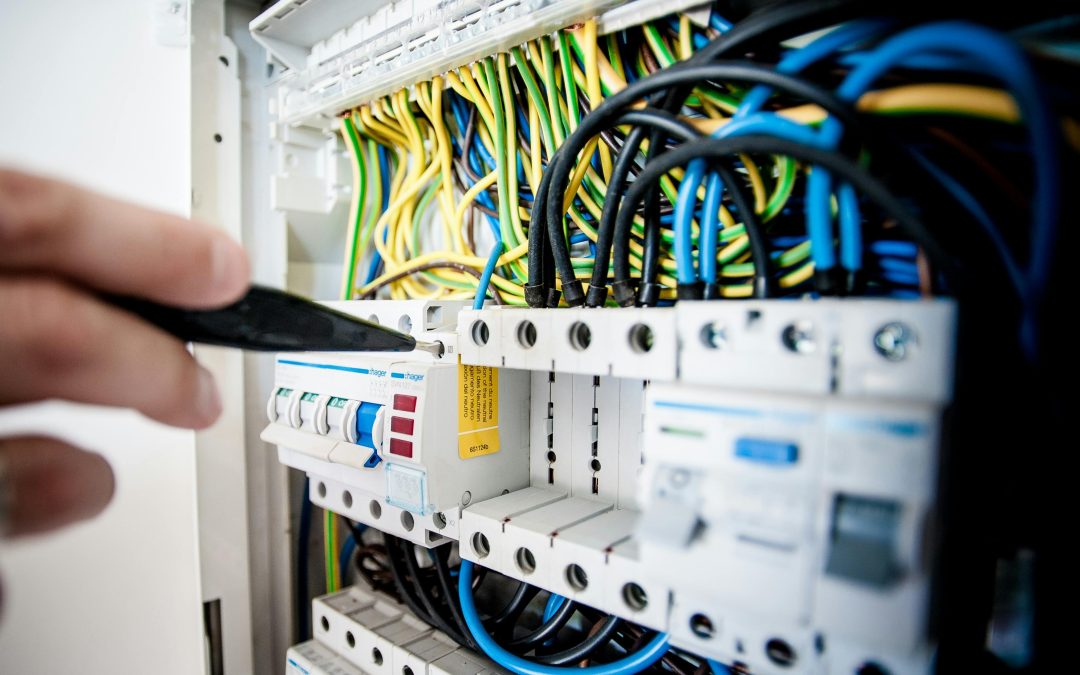Introduction
Household electrical wiring is a crucial aspect of any home, providing power to lighting, appliances, and essential devices. Understanding how wiring works can help homeowners make informed decisions about electrical installations, troubleshoot issues, and ensure safety. This guide covers the basic components of household wiring, common circuits, standard color codes, and important safety measures to follow when working with electrical systems.
1. Basic Components of Household Wiring
The main distribution board (DB) serves as the central hub for electrical distribution in a home. It receives power from Tenaga Nasional Berhad (TNB) or another utility provider and distributes it to various circuits throughout the house. Inside the panel, Miniature Circuit Breakers (MCBs) and Residual Current Devices (RCDs) (also known as Residual Current Circuit Breakers, RCCBs) are installed to protect against overcurrent, short circuits, and electrical leaks, ensuring safety. Different types of wiring are used in household installations, with PVC-insulated cables commonly used for indoor wiring, while armored cables or PVC conduit wiring are used for outdoor or high-moisture areas. Sockets and switches are essential for controlling and distributing electricity, allowing safe and efficient use of appliances and lighting fixtures.
2. Common Household Circuits
Different parts of a home require specific wiring configurations to meet power demands. Lighting circuits are typically 6A circuits using 1.5mm² cables, providing sufficient power for standard lighting fixtures. Power socket circuits commonly operate at 13A, using 2.5mm² cables for standard outlets. High-power areas, such as kitchens and bathrooms, require Residual Current Circuit Breakers (RCCBs) or Earth Leakage Circuit Breakers (ELCBs) to provide protection against electric shocks. High-power appliances like air conditioners, ovens, water heaters, and washing machines operate on dedicated circuits, typically using 4mm² or 6mm² cables, and may require higher voltage ratings (e.g., 240V single-phase or 415V three-phase for larger homes or commercial units) to prevent overloading standard circuits.
3. Wiring Color Code (Malaysia Standard)
In Malaysia, electrical wiring follows a standardized color-coding system to ensure safety and consistency. The brown wire is designated as the live (hot) wire, carrying electrical current from the distribution board to devices. The blue wire serves as the neutral, providing a return path for the current back to the power source. For safety grounding, the green/yellow striped wire is used, directing excess electricity safely into the ground in case of a fault, preventing electrical shocks and potential hazards.
4. Safety Tips
Working with electrical wiring requires strict adherence to safety guidelines to prevent accidents and ensure compliance with Suruhanjaya Tenaga (Energy Commission Malaysia) regulations and the Electricity Supply Act 1990. Before starting any electrical work, it is crucial to switch off the power at the main distribution board (DB) to eliminate the risk of electric shock. Using a voltage tester or a non-contact voltage detector to verify that the circuit is truly de-energized is an additional safety step that should never be skipped.
Always follow Malaysia’s Wiring Standards (MS IEC 60364) to ensure installations meet legal and safety requirements. It is also important to use Residual Current Circuit Breakers (RCCBs) or Earth Leakage Circuit Breakers (ELCBs) to protect against electrical leakage and shocks. Additionally, never overload circuits—calculate the total wattage of connected devices and ensure that high-power appliances, such as air conditioners and water heaters, are on dedicated circuits to prevent overheating and fire hazards.
Conclusion
Household electrical wiring is a vital part of any home, ensuring that power is safely and efficiently distributed to different areas. Understanding the basic components, common circuits, and wiring color codes can help homeowners work more confidently with electrical systems. However, safety should always be a top priority, and when in doubt, consulting a professional electrician is the best course of action. By following proper wiring practices and adhering to safety guidelines, homeowners can maintain a safe and reliable electrical system in their homes.

